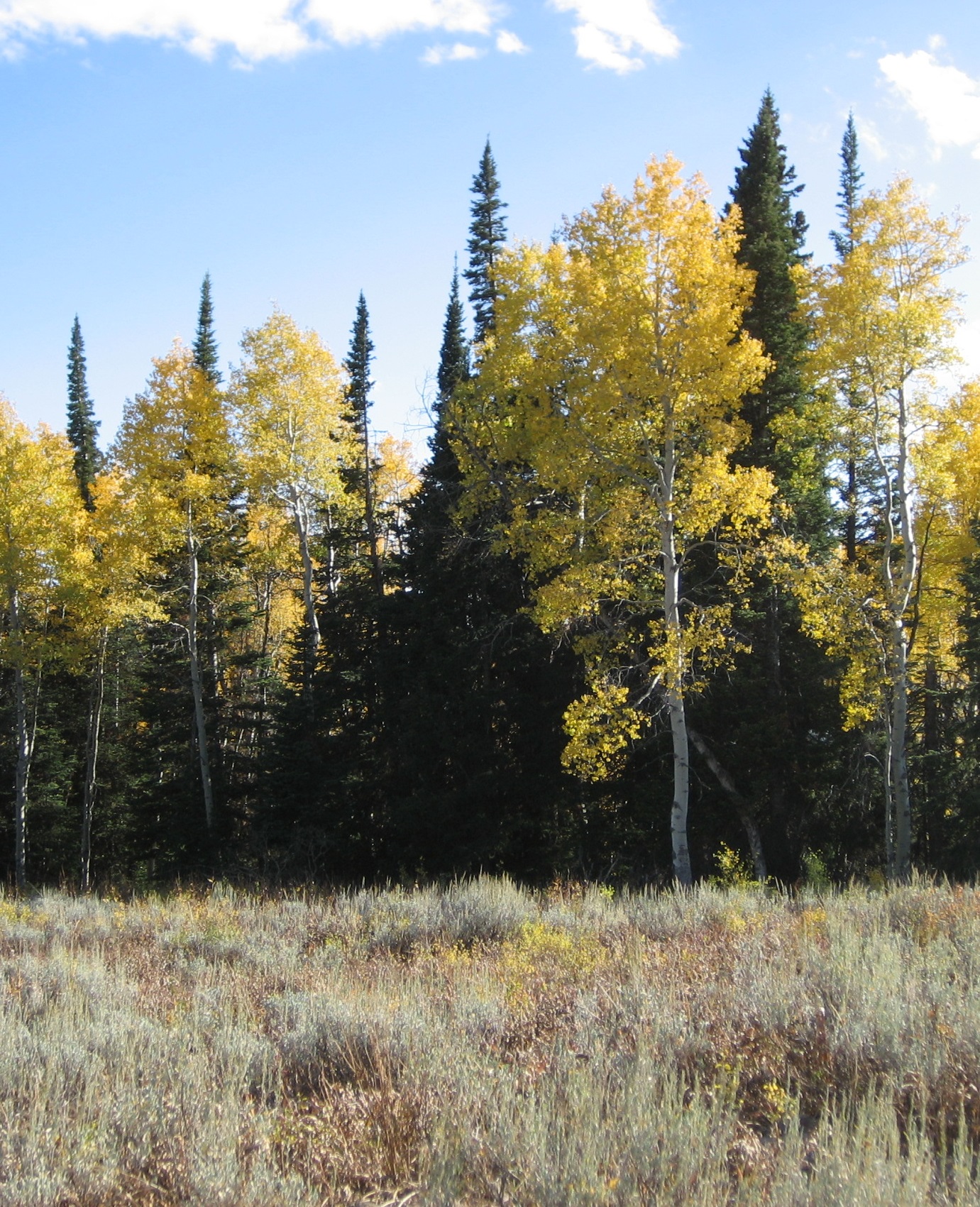 Quaking aspen (Populus tremuloides) is the most widely distributed native Northern American tree species and is abundant in the Intermountain West. Aspen is found across a range of elevations and in a variety of habitats from sagebrush-steppe to mixed-conifer forests and subalpine meadows. Aspen communities support a large number and diversity of understory and overstory plant species and provide habitat for many birds and small mammals. Aspen dieback and mortality is a concern across the western US. Recent studies can be used to inform aspen restoration and the stabilization of existing populations. Resources listed here provide the background necessary to understand causes of site-specific aspen decline and to inform restoration planning in the Northern Rockies.
Quaking aspen (Populus tremuloides) is the most widely distributed native Northern American tree species and is abundant in the Intermountain West. Aspen is found across a range of elevations and in a variety of habitats from sagebrush-steppe to mixed-conifer forests and subalpine meadows. Aspen communities support a large number and diversity of understory and overstory plant species and provide habitat for many birds and small mammals. Aspen dieback and mortality is a concern across the western US. Recent studies can be used to inform aspen restoration and the stabilization of existing populations. Resources listed here provide the background necessary to understand causes of site-specific aspen decline and to inform restoration planning in the Northern Rockies.
This hot topic was developed in partnership with Grand Teton National Park.
Recorded Webinars
Research Briefs
- Pando's lessons: restoration of a giant aspen clone
- The role of fire in aspen ecology and restoration
- Managing ungulate browsing for sustainable aspen
- Building resilience into quaking aspen management
- Soil temperatures and suckering in burned and unburned aspen stands in Idaho
- Elk-aspen relationships on a prescribed burn
Syntheses
- Quaking aspen in the Northern Rockies: retention and restoration
- Populus alba, Populus x canescens, Populus x heimburgeri, Populus x rouleauiana, Populus x tomentosa (white poplar, gray poplar, Heimburger's poplar, Roulwau's poplar, Chinese white poplar)
- Populus alba and hybrids
- Populus angustifolia (narrowleaf cottonwood)
- Populus balsamifera subsp. trichocarpa (black cottonwood)
- Populus deltoides, Populus deltoides var. deltoides, Populus deltoides var. mislizeni, Populus deltoides var. monilifera (eastern cottonwood, eastern cottonwood, Rio Grande cottonwood, plains cottonwood)
- Populus tremuloides (quaking aspen)
- Populus balsamifera subsp. balsamifera (balsam poplar)
Conference Proceedings
- Hydraulic redistribution and hydrological controls on aspen transpiration and establishment in peatlands following wildfire
- Landscape composition in aspen woodlands under various modeled fire regimes
- Manipulations to regenerate aspen ecosystems
- Aspen's ecological role in the West
- Aspen response to prescribed fire and wild ungulate herbivory
- Native burning in western North America: implications for hardwood forest management
- Managing wildlife habitat with fire in the Aspen ecosystem
- Spring burning in an aspen-conifer stand for maintenance of moose habitat, West Boulder River, Montana
Technical Reports/White Papers
- Less fuel for the fire: How will drought amplify effects of short-interval fire?
- Guidelines for aspen restoration in Utah with applicability to the Intermountain West
- Assessment of aspen ecosystem vulnerability to climate change for the Uinta-Wasatch-Cache and Ashley National Forests, Utah
- Guide to Quaking Aspen Ecology and Management
- Great Basin aspen ecosystems
- Incorporating wildlife habitat needs into restoration and rehabilitation projects
- Fire ecology of the forest habitat types of eastern Idaho and western Wyoming
- Forage quality in burned and unburned aspen communities
- Appraising fuels and flammability in western aspen: a prescribed fire guide
- Fire's influence on wildlife habitat on the Bridger-Teton National Forest, Wyoming - Volume I: photographic record and analysis